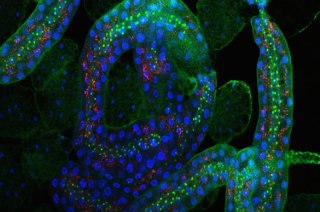
PhD project
Project 7 - Tsetse fly associated covert viruses and endosymbionts (NL)
Insect pests such as tsetse flies cause major health and economic problems as they transmit trypanosomes causing sleeping sickness in humans and nagana in animals (cattle, antelopes). The Sterile Insect Technique (SIT) is an effective method of vector control. It consists of sterilizing the males by irradiation. Then a large number of sterile males are released in the target area. The sterile males compete with wild males to mate with virgin females. Females mate only once, and those that mate with a sterile male produce no offspring, reducing the population size of the next generation. In order to have success with the SIT, it is important to have a healthy and competitive insect colony. The aim of this project is to improve tsetse mass rearing by analysing the impact of viral infection on colony performance.
Project and Plan
The problem in insect’s mass production are often covered viruses such as the Glossina pallidipes salivary gland hypertrophy virus (GpSGHV) for Glossina pallidipes which can cause the collapse of an entire colony. Recently, two new covert viruses have been detected in Glossina moristans morsitans: Iflavirus and Negevirus. Up to now, effects of these two viruses on colony performances are unknown. Previous results show that Ifla- and Negevirus are present in all Glossina species held in the rearing facility of Seibersdorf (Austria), except in Glossina pallidipes. On the other hand, G. pallidipes is the only species suffering from the negative effects of GpSGHV. This evokes that Ifla-and Negevirus might protect the other tsetse species from SGHV. My project aims to get a deeper insight on the mode of transmission and tissue tropism of these new viruses. In order to do so, we preformed stellaris Insitu hybridization as well as qPCR to detect the localization and level of virus expression in different tsetse fly tissues. The next step will be to infect Glossina pallidipes with the Ifla and Negevirus. The goal will be to understand impact of Ifla and Negevirus on the colony, their transmission pathways as well as a possible protective effect against SGHV in G. pallidipes. Another interesting point will be to study the virus gene expression profiles under covert (asymptomatic) and overt (symptomatic) infections.
Finally, we will study the interaction of the identified viruses with the tsetse flies’ endosymbionts, as these might help to control viral infections. A further point will be to determine whether the virus status affects the vector competence for trypanosomes.
